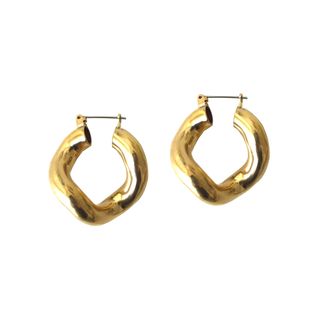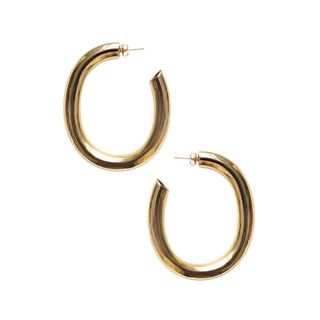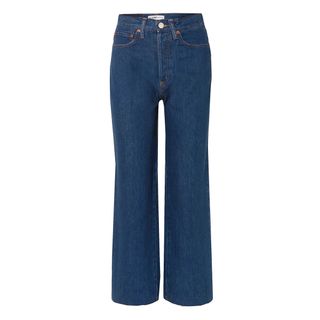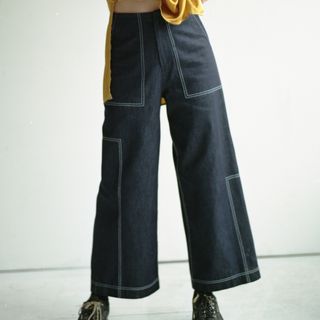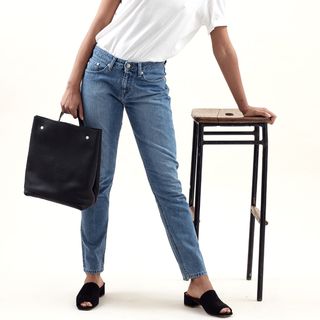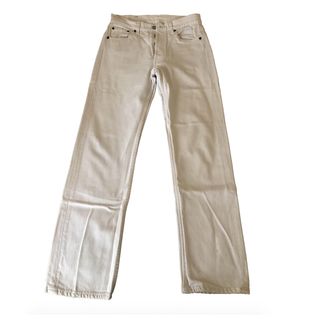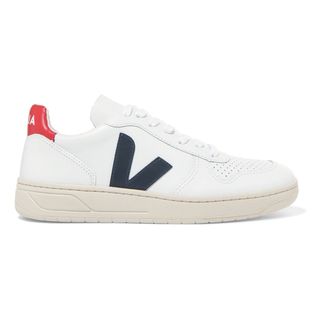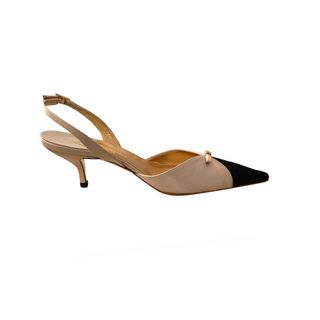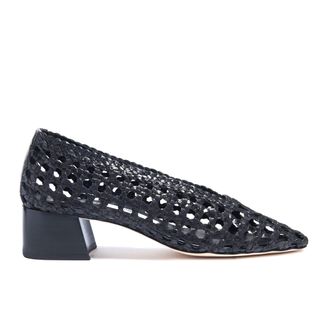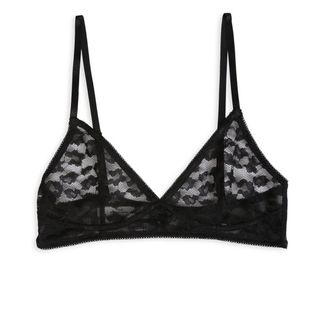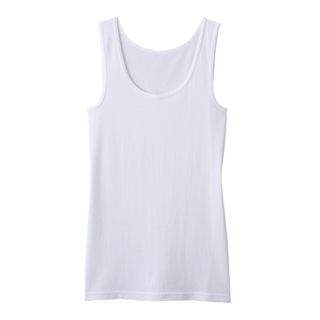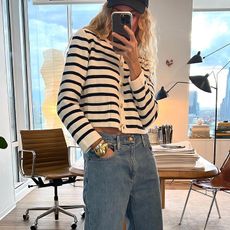Breaking Up With Fast Fashion Has Been Easier Than I Thought
Like any on-again, off-again relationship, my love affair with fast fashion was a complicated one. It feels like a million years ago when we met, but the more I got to know about fast fashion, I felt it just wasn't right for me. Even though I've been taught that fast fashion is a solution to so many things (i.e., not being able to afford fashion trends or how buying new outfit can offer me a whole new identity), I've been learning to separate these out more. I began to question not only what was my shopping doing to the world, but what was I actually getting out of my relationship with fast fashion? As I began to understand its detrimental social and environmental impacts (one viewing of The True Cost on Netflix is very enlightening), I've been trying my best to shop sustainably. I've always loved vintage and thrift shopping, but increasingly buying secondhand has become my true love and fast fashion, my ex.
As with any breakup, I'm trying to shift my focus onto the positive. Shopping smaller brands, especially on Instagram, brings me so much joy. I recently bought a bag from a sustainable, Birmingham-based brand called Roop, which was £45 (the equivalent of two mid-range high-street bags). Every time I wear it out, I love telling the story about chatting with the designer in my DMs, picking between the fabrics and considering my personal style before committing to the bag. This kind of value is something I rarely got from a quick high-street fix, simply because the chain of production is so cloudy that we do not actually know who makes our clothes.
I feel similarly about all of my vintage pieces, and I've channelled my love of shopping into hunting down the best pieces on Vestiaire Collective, eBay or charity shops. I'm still careful about what I choose to invest in, but when I do, I relish the story that comes with each unique piece. In turn, I feel reluctant to get rid of one of these treasures when I do a wardrobe clearout.
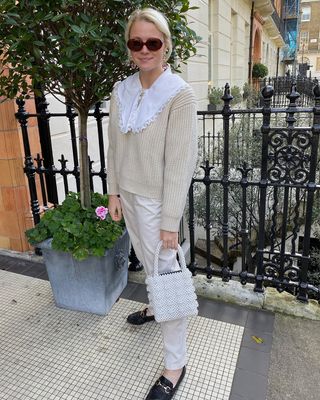
I try not to judge myself in the rarer moments that I do shop fast fashion—the point is not to feel guilty like I've failed or given in. We each are living our lives and have personal and complicated reasons to need to buy fast fashion. As a student living in London, a fresh pack of undies at M&S is still one of my greatest treasures. I just try to ask myself why I am doing it. Do I genuinely love the piece and will I wear it over and over?
If I do shop on the high street, I try to take a step back out of the impulse of the moment by checking where the piece was made and what materials it's made from and think about who actually made the clothes. If I'm shopping online, I save an item and try to return to it a week or two later to see how I feel about it. What it comes down to is us, as consumers, taking time to really question our relationships to our clothes, just like we would a romantic partner. It can be easy to fall into something without questioning if it is holistically beneficial. If you can't find the exact right thing, do with less.
Yes, I am still reconciling my relationship with the high street. Below is a list of the pieces that I've had a harder time letting go of. Plus, see how I'm actually managing to get by without stepping foot into a single Zara store.

When I first moved to London, in an effort to carve out a new fashion identity, I declared statement gold earrings as "my thing." I stocked up on a bunch of £10 high-street pairs and wore them until my ears turned green. I've now lived here for nearly three years and none have survived. Spending £100 on a proper pair (that won't infect my ears) has always felt like a bit much, but if I do the math, I've spent just as much on repeat buying of the cheaper versions. I wasn't actually saving. A well-made pair can be fixed and cared for, while the cheaper metals simply fall apart. I'm thinking about saving up for a pair of these Laura Lombardi ones instead, which are made exclusively in raw or recycled metals and stocked in a lovely independent shop in Bath called Found.
MY SUSTAINABLE GOLD JEWELLERY OPTIONS

Finding jeans that fit and felt good on me took so long there was a period of time when I just gave up on denim altogether. So when I finally found out that COS denim was my favourite thing on the planet, it became difficult to part with them in an effort to buy more sustainably. They are thinner than Levi's (the popular vintage denim choice) and fit my wide hips and small bum really nicely. As a result, I've limited myself to buying at maximum one pair a year, with the goal to spend time finding a vintage pair I can tailor to my size, as I find new sustainable denim brands are out of my budget.
MY SUSTAINABLE DENIM PICKS

Every so often, I used to have a Carrie Bradshaw moment and think that a new pair of fabulous shoes would solve my problems. When I'm feeling sad or lonely (or just spontaneous), I link retail therapy to feeling better. Without a Manolo budget, these episodes would result in a new pair of heels from the high street that I wore once. More often than not, they would just hurt me and not give me the satisfaction I was craving or make me feel all that fabulous. My goal has been to try curving that habit by 1) asking myself what the real problem is and try to go about solving that first and then 2) investing in classic pairs (from sustainable or smaller designer brands where possible) to wear on repeat. If I am having a wacky shoe impulse, I'll try to buy vintage designer pairs so I can truly fulfil a Carrie Bradshaw moment, but I've been working hard to separate consumption from my low points.
MY SUSTAINABLE SHOES CHOICES

Finding the best basics, like jeans, was a long journey for me and definitely the hardest to find secondhand for consistency and hygiene reasons. From underwear to basic tees, it's Marks and Spencer I've always loved the most. Recently, I've turned to charity shops for basic tees, including Oxfam online, as many of them come from the '90s and are actually really well-made and fit really well. In looking for sustainable new options, Muji is the most sustainable on the high street, while brands like Fruity Booty and Base Range are sustainable brands we love for basics, though they are a bit more of an investment.
So much of being more sustainable in my shopping habits is about shifting my perspective, and the best way of achieving that has been keeping the conversation going. Buy less, buy better and see how you feel in your relationships with your clothes. I don't miss impulse buying on the way to an event. And my love for the pieces in my wardrobe now is stronger than ever. Do I sometimes dream about a Zara top? Sure. But as fashion and shopping lovers, we're learning together that less really is more. If you have questions about what shopping more sustainably, be sure to join our Facebook community.
This article was first published in March 2019 and has since been updated.
Next: I Mostly Shop Secondhand—Here Are the Best Pieces From Etsy, Vestiaire and eBay
-
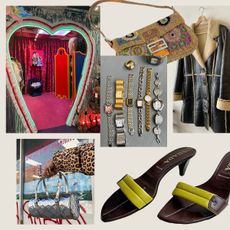 From Bella Hadid to Vogue Staffers—These Are the 10 Insider-Approved Vintage Stores in NYC
From Bella Hadid to Vogue Staffers—These Are the 10 Insider-Approved Vintage Stores in NYCNo gatekeeping here.
By Anna LaPlaca
-
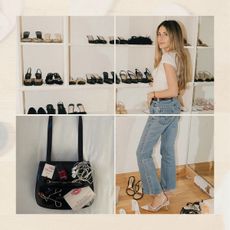 The Women Behind Instagram's Designer-Vintage Craze
The Women Behind Instagram's Designer-Vintage CrazeI suggest you get to know them.
By Eliza Huber
-
 Reformation Finally Launched Swimwear, and the Collection Is Pure Elegance
Reformation Finally Launched Swimwear, and the Collection Is Pure Elegance*Orders every suit.*
By Eliza Huber
-
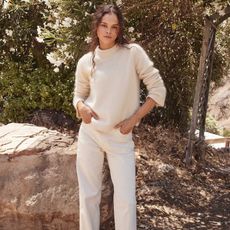 16 Classic Finds That Are Key to Building Your Perfect Capsule Wardrobe
16 Classic Finds That Are Key to Building Your Perfect Capsule WardrobeThis brand is a gem.
By Raina Mendonça
-
 16 Classic Winter Fashion Finds That Will Stand the Test of Time
16 Classic Winter Fashion Finds That Will Stand the Test of TimeThese are winners.
By Raina Mendonça
-
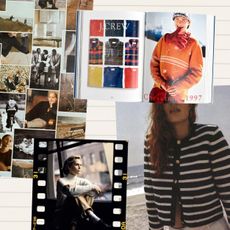 It's a Good Time to Be a Vintage J.Crew Fan, Thanks to These 12 Chic Pieces
It's a Good Time to Be a Vintage J.Crew Fan, Thanks to These 12 Chic PiecesI'm in my Carolyn Bessette-Kennedy era.
By Ana Escalante
-
 For Latinos, Grandma's Gold Rings Aren't Just an Aesthetic—They're a Culture
For Latinos, Grandma's Gold Rings Aren't Just an Aesthetic—They're a CultureRead the powerful stories behind these families' most precious pieces.
By Ana Escalante
-
 This Earring Trend Is the Secret to Making My Whole Outfit Look Like Pure Luxury
This Earring Trend Is the Secret to Making My Whole Outfit Look Like Pure LuxuryTake a peek for plenty of vintage, designer, and affordable options.
By Judith Jones

